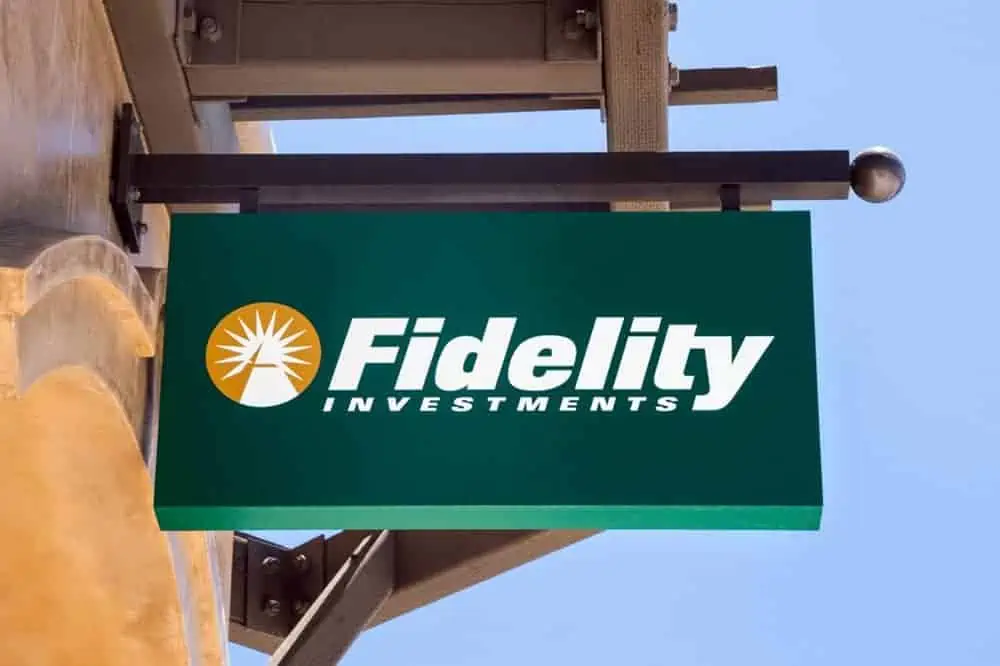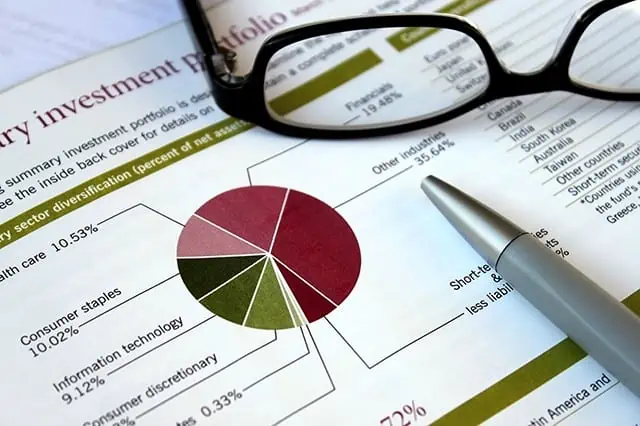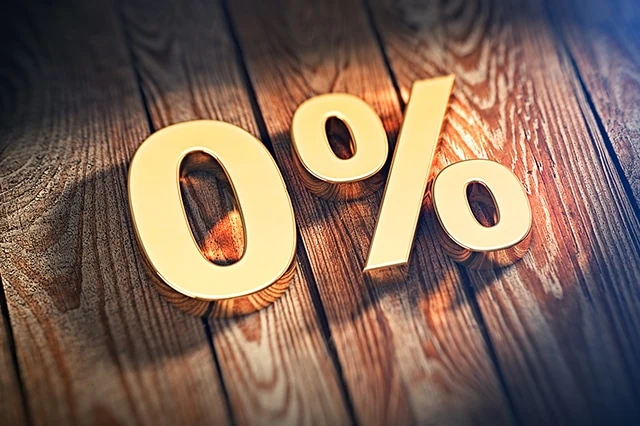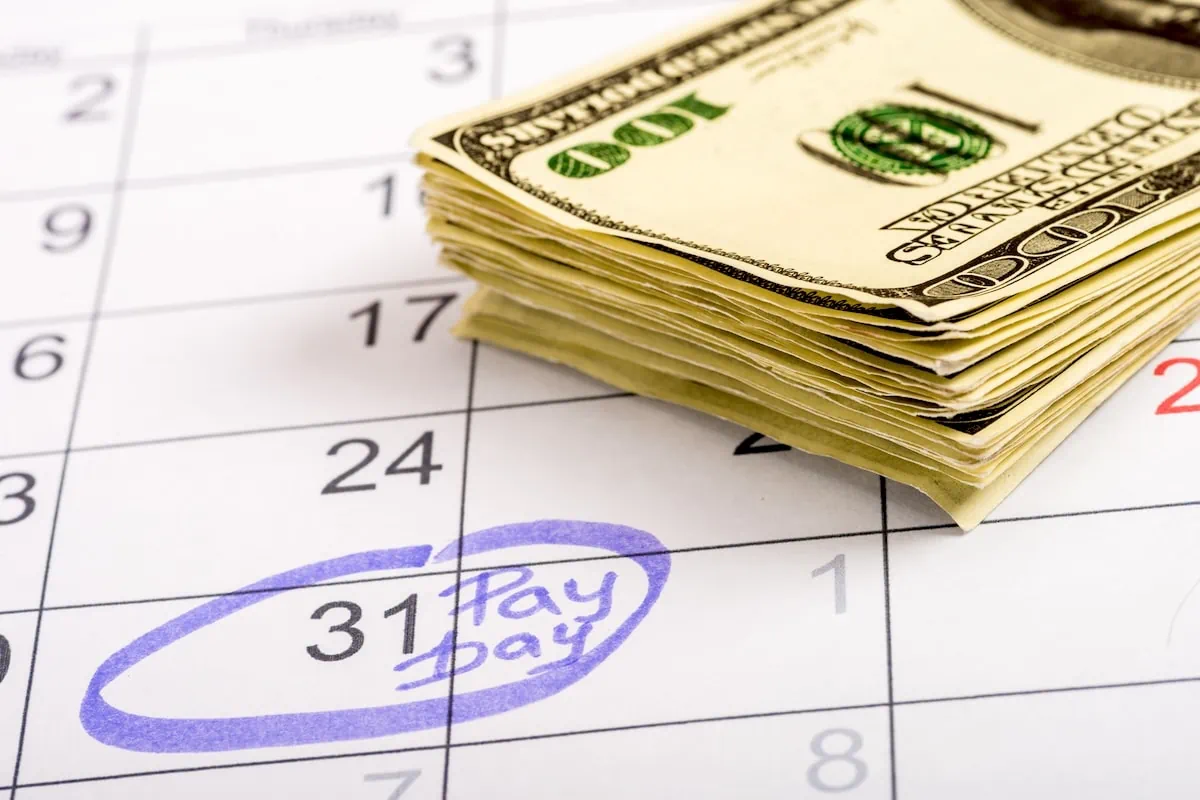Fidelity holds a prominent place in retirement portfolios nationwide, standing shoulder to shoulder with the best from any leading mutual fund company in both cost and the diversity of their offerings.
Fidelity has been a leader in mutual funds and exchange-traded funds (ETFs), covering virtually every asset class for decades. It currently boasts more than 43 million individual investors holding $12.4 trillion in assets—scale that allows it to both add new products over time and keep lowering its already low costs.
Let’s take a look at how Fidelity funds can be used to best position your retirement portfolio. I’ll explore some of the best mutual funds for retirement that Fidelity offers, and provide answers to some common related retirement investing questions.
Disclaimer: This article does not constitute individualized investment advice. These securities appear for your consideration and not as personalized investment recommendations. Act at your own discretion.
Editor’s Note: The tabular data presented in this article is up-to-date as of Sept. 30, 2024.
Table of Contents
What Should You Want in a Retirement Fund?

When you’re ready to invest your retirement savings, you need to consider a few critical points.
— Assets: First and foremost, a diversified portfolio should include every major asset class. That’s easy to do with Fidelity mutual funds, as the company offers competitive stock funds and bond funds that are available at most major brokerage houses.
— Fees: Equally significant are the associated costs. Each dollar paid in fees and expenses is a dollar no longer available to compound your wealth.
— Income: Lastly, an ideal retirement portfolio should aim to generate consistent income. While equity funds can be subject to periodic downturns and bear markets, a bond fund focused on income can provide for your living expenses without requiring you to sell assets at what might be an inopportune time. A well-constructed retirement portfolio should include both growth and income strategies.
Fidelity is a popular choice among employers as a custodian for 401(k) plans for the very same reasons. If you’re looking for low fees and broad exposure to every major asset class, Fidelity will generally be a solid option.
Why Fidelity Mutual Funds?

Fidelity is a leader in mutual funds (and exchange-traded funds [ETFs], for that matter) and has been a force in the industry since the launch of its Fidelity Puritan Fund (FPURX) back in 1947.
Today, this premier mutual fund company has more than $12 trillion in assets under administration thanks to many successes over the intervening years. That includes star money managers such as Peter Lynch, the long-time manager of the Fidelity Magellan Fund (FMAGX) who averaged an incredible 29.2% per year between 1977 and 1990.
However, while Fidelity first built its name on actively managed funds, over the past three decades, the firm has built out its low-cost and even no-cost index funds as part of the movement to reduce expense ratios and transaction costs for individual investors.
The Top Retirement Funds Available From Fidelity for 2024

So, with all of that as an introduction, let’s choose some of the very best Fidelity retirement funds to round out a portfolio.
Any or all of these mutual funds should be equally appropriate for a tax-deferred retirement plan like an IRA or 401(k) plan, or a regular, good old-fashioned brokerage account.
1. Fidelity 500 Index Fund

— Type: U.S. large-cap blend
— Assets under management: $599.4 billion
— Expense ratio: 0.015%, or 15¢ per year for every $1,000 invested
— Dividend yield: 1.2%
— Minimum initial investment: None
As a long-term wealth builder, it’s really hard to beat the S&P 500. It’s rare to find an actively managed mutual fund that can consistently beat the S&P 500 over time, particularly after considering fees and expenses. In building out a long-term retirement portfolio, an investment in a simple S&P 500 Index fund like the Fidelity 500 Index Fund (FXAIX) is one of the absolute smartest moves you can make.
Related: The 10 Best Fidelity Funds You Can Own
If you believe in the American growth story, then buying a basket of America’s biggest and most recognized companies makes sense. Even Warren Buffett, the Oracle of Omaha himself—considered by many to be the greatest investor in history—has said on multiple occasions that most investors, most of the time, should simply buy and hold an S&P 500 index fund and let it run.
The Fidelity 500 Index Fund has an almost nonexistent expense ratio of just 0.015%, which is just about impossible to beat. That has helped it draw an incredible $600 billion in assets under management.
Related: The 7 Best Mutual Funds for Beginners
Turnover in S&P 500 index funds tends to be low at just a couple percent in any given year. That makes them an extraordinarily tax-efficient way to invest, as they generate very little in taxable capital gains. So, if you find yourself with limited IRA or 401(k) funds available to invest, it makes sense to allocate your taxable dollars to a fund like FXAIX.
Related: 12 Best Long-Term Stocks to Buy and Hold Forever
2. Fidelity Zero Total Market Index Fund

— Type: U.S. large-cap blend
— Assets under management: $23.8 billion
— Expense ratio: N/A
— Dividend yield: 1.1%
— Minimum initial investment: None
Fidelity has taken low-cost index investment to a new level with its ZERO line of mutual funds. These Fidelity mutual funds literally charge nothing in fees.
Related: Beginner’s Guide to Fidelity Target-Date Funds
As a practical matter, there is not much difference between an expense ratio of 0.015% and zero. That extra 15¢ per year per $1,000 invested isn’t going to make a material difference over an investing lifespan. But if paying the absolute minimum in fees is philosophically important to you, then it’s hard to argue with the ZERO line of Fidelity mutual funds.
Related: 7 Best Fidelity ETFs for 2024 [Invest Tactically]
The Fidelity Zero Total Market Index Fund (FZROX) does provide slightly different exposure than Fidelity 500, however. With FZROX, you gain access to the entire universe of U.S. stocks by tracking the Fidelity U.S. Total Investable Market Index, a float-adjusted market cap-weighted index designed to reflect the performance of the full U.S. equity market (including large-, mid-, and small-cap stocks). To keep costs down, the mutual fund uses statistical sampling techniques to replicate the returns of the index without having to own every underlying stock. Still, this Fidelity fund currently holds nearly 2,650 stocks, making it exceptionally well diversified.
Related: The 7 Best Fidelity Index Funds for Beginners
To invest in FZROX, or any other Fidelity ZERO fund, you have to have a Fidelity brokerage account. If you don’t have a Fidelity brokerage account but want comparable exposure, the Fidelity Total Market Index Fund (FSKAX) charges a barely noticeable 0.015% in annual expenses and requires zero minimum initial investment.
3. Fidelity Trend Fund

— Style: U.S. large-cap growth
— Assets under management: $3.7 billion
— Expense ratio: 0.49%, or $4.90 per year for every $1,000 invested
— Dividend yield: 0.0%
— Minimum initial investment: None
An old Wall Street maxim says “you never go broke taking a profit.” There is a lot of wisdom in that quote. As a general rule, buying and holding good stocks or good funds and allowing them to compound over years or even decades is the way to go. But having at least part of your portfolio in actively traded strategies can also make sense, particularly in bear markets. Actively traded strategies have their stretches when they outperform passive index strategies, and they can potentially help you to avoid major declines.
Related: 5 Best Vanguard Dividend Funds [Low-Cost Income]
Unfortunately, active trading strategies are also woefully tax-inefficient, particularly if your holding period is less than a year. Short-term capital gains are taxed as ordinary income, meaning you could be sharing up to 37% of your gains with Uncle Sam.
So, it makes sense to hold funds that do a lot of active trading in a tax-deferred retirement account. There is no precise, universally accepted threshold for what constitutes “a lot” of active trading, but I would consider any fund with portfolio turnover (how much of the portfolio’s holdings are turned over, or replaced, in a given year) over 30% or so to be fairly tax-inefficient. The higher that number goes, the more inefficient the fund.
Related: The Best REITs to Invest In for 2024
As an example, let’s look at the Fidelity Trend Fund (FTRNX). This is a fairly aggressive fund that focuses on companies the manager believes have above-average growth potential. FTRNX is tech-heavy and has beaten its Morningstar Category average over every meaningful time period.
But this high performance comes at the cost of a lot of active trading; the annual portfolio turnover is about 50%. In a taxable account, that’s a large potential tax liability. So, if you’re going to hold FTRNX, you’re better off doing so in a tax-advantaged retirement account.
Related: 9 Monthly Dividend Stocks for Frequent, Regular Income
4. Fidelity Contrafund

— Style: U.S. large-cap growth
— Assets under management: $149.1 billion
— Expense ratio: 0.39%, or $3.90 per year for every $1,000 invested
— Dividend yield: 0.4%
— Minimum initial investment: None
If you are new to investing in equity mutual funds, you are in good hands with Fidelity Contrafund (FCNTX) manager Will Danoff. He’s one of the most successful equity fund managers in history and has been running FCNTX for three decades, helping to build it into one of the largest mutual funds in the world.
Contrafund has a simple mandate—capital appreciation (in other words, price gains)—and the fund is anything if not flexible. It can pursue value stocks, growth stocks, or any combination of the two.
Given Contrafund’s size, it generally has to concentrate in large-cap stocks. Its biggest holding is Facebook parent Meta Platforms (META), which makes up more than 12% of its portfolio. Warren Buffett’s Berkshire Hathaway (BRK.B), Microsoft (MSFT) and Amazon.com (AMZN) are also large positions at between 6% and 9% each.
Related: WealthUp’s Winningest Tech Stocks for 2024
In most years, Contrafund’s returns won’t deviate all that much from the S&P 500’s returns, and over the past decade, the fund’s annualized returns have been almost identical to the S&P 500. But in 2000, 2001 and 2002—a bear market that, similar to our most recent one, centered around technology and growth stocks—the S&P was down 9.0%, 11.9%, and 22.0%, respectively. Contrafund lost a good deal less over that three-year stretch at 6.8%, 12.6%, and 9.6%, respectively.
The fund struggled in 2022, but then, in a bear market, virtually all equity funds take damage. It’s the price we pay for getting access to the upside of a bull market. Remember: A skilled manager can really earn their keep during difficult markets by minimizing those losses while still positioning the portfolio to benefit when the market comes roaring back; indeed, Danoff managed to beat his category average in 2022, then did so again in 2023, posting 39% returns to top the category and sprint past the S&P 500.
Related: The 9 Best ETFs for Beginners for 2024
Most importantly: Danoff has managed to beat the category across every meaningful time period. So while FCNTX isn’t extremely tax-inefficient—turnover is about 25%—it still makes sense to hold in a tax-advantaged account if you’re looking for sheer performance.
5. Fidelity International Index Fund

— Type: Foreign large-cap blend
— Assets under management: $55.4 billion
— Expense ratio: 0.035%, or 35¢ per year for every $1,000 invested
— Dividend yield: 2.8%
— Minimum initial investment: None
The United States is the world’s leading innovation hub as well as its largest economy. And if you are an American and your expenses are in dollars, it only makes sense to keep the bulk of your wealth in U.S. stock and bond funds.
Related: 10 Best Vanguard Funds for the Everyday Investor
Still, there are thousands of quality companies in developed markets like Europe, Canada, Australia, or wealthier Asian markets like Japan or South Korea, and in emerging markets (less stable but faster-growing) like China and India. And while U.S. stocks have led the world over the past decade, there are long stretches when international stocks outperform, such as the 2000-08 period most recently.
If you’re looking for broad exposure to international stocks, a very solid option is the Fidelity International Index Fund (FSPSX). This Fidelity mutual fund holds a portfolio of more than 800 international stocks, including household names like Switzerland’s Nestlé (NSRGY), Japan’s Toyota (TM) and France’s LVMH Moët Hennessy Louis Vuitton (LVMUY).
The fund is a one-stop shop for exposure to international stocks, and with an expense ratio of just 0.035%, it’s virtually free to own.
Related: 6 Best Stock Recommendation Services [Stock Tips + Picks]
6. Fidelity Total Bond Fund

— Style: U.S. intermediate bond
— Assets under management: $41.0 billion
— Expense ratio: 0.45%, or $4.50 per year for every $1,000 invested
— SEC yield: 4.7%*
— Minimum initial investment: None
Bonds should be a core holding of just about any portfolio. They also happen to be one of the most tax-inefficient asset classes on earth because the bulk of their returns will generally come from interest paid, and interest income is taxed as ordinary income. If you’re in the 37% tax bracket, then you’re losing 37% of your bond interest to taxes.
For this reason, it will virtually always make sense to hold bond funds in a tax-deferred retirement account, such as a 401(k), IRA, or HSA.
Related: Best Fidelity Retirement Funds to Hold in an IRA
Fidelity Total Bond Fund (FTBFX) is a broad bond-market fund that allocates its assets across a wide variety of bonds and other income-producing debt. While it tends to gravitate toward investment-grade debt, the fund is allowed to invest up to 20% of assets in bonds rated below investment-grade, which potentially offer higher returns in exchange for accepting slightly higher risk. (Sub-investment-grade bonds are also referred to as high-yield debt securities or junk bonds.)
Currently, 35% of the portfolio is invested in corporate bonds, while 30% is invested in U.S. government debt. Most of the rest is invested in mortgage bonds or other mortgage-backed securities (MBSes). And right now, 85% of the portfolio is investment-grade, so the fund isn’t even using its full allowable allotment to junk bonds.
Related: Best Fidelity Retirement Funds to Hold in a 401(k) Plan
One of the most critical metrics to consider when considering bond funds is duration, which is a measure of interest-rate sensitivity. As an example, a bond with a duration of two would see its price rise by 2% if interest rates fell by 1% (or conversely, would see its price fall by 2% if interest rates rose by 1%). The actual calculation of duration is fairly complex; it’s the weighted average of the bond’s cash flows. But the key takeaway is that, all else equal, the longer a bond’s time to maturity, the higher its duration—and thus the higher the interest-rate risk.
FTBFX has a duration of just more than 6 years; thus, the fund has moderately high interest-rate risk. A rise in interest rates of 1% would mean a price decline of about 6%. But remember: This cuts both ways. A fall in interest rates could mean significant capital gains.
Related: The 7 Best Fidelity ETFs for 2024 [Invest Tactically]
* SEC yield reflects the interest earned across the most recent 30-day period. This is a standard measure for funds holding bonds and preferred stocks.
7. Fidelity Short-Term Bond Index Fund

— Type: U.S. short-term bond
— Assets under management: $2.8 billion
— Expense ratio: 0.03%, or 30¢ per year for every $1,000 invested
— SEC yield: 3.8%
— Minimum initial investment: None
When the yield curve is inverted as it is today (meaning short-term bond rates are higher than long-term bond rates), it’s hard to justify the additional risk of longer-term bonds. Buying short-term bonds—or short-term bond mutual funds—provides higher income. Thus, no list of the best Fidelity retirement funds would be complete without a short-term bond fund like the Fidelity Short-Term Bond Index Fund (FNSOX).
Related: 5 Best Money Market Funds [Protect Your Savings]
FNSOX tracks the performance of the Bloomberg U.S. 1-5 Year Government/Credit Bond Index, a market value-weighted index of fixed-rate investment-grade debt securities with maturities from one to five years, including U.S. Treasuries, other U.S. government-related debt, and corporate debt.
These are high-quality bonds with little in the way of credit risk. And because the bonds are short-term in nature, they have very little sensitivity to changes in market interest rates. FNSOX’s bond portfolio has a weighted average maturity of just 2.9 years and a duration of just 2.53 years. So, if interest rates were to rise by 1%, the portfolio would experience a short-term capital loss of about 2.53%. Likewise, a 1% fall in interest rates would mean a 2.53% increase in short-term capital gains.
Related: The 7 Best Dividend ETFs [Get Income + Diversify]
There will come a day when short-term bond funds will no longer be particularly attractive, and that day may come sooner rather than later. Currently, the futures market is pricing in aggressive rate cuts by the Federal Reserve over the course of 2024.
But for now, a ~4.0% yield is attractive and comes with very little risk. So for now, FNSOX remains one of the very best Fidelity retirement funds.
* SEC yield reflects the interest earned across the most recent 30-day period. This is a standard measure for funds holding bonds and preferred stocks.
8. Fidelity Real Estate Income Fund

— Style: U.S. REIT
— Assets under management: $5.0 billion
— Expense ratio: 0.73%, or $7.30 per year for every $1,000 invested
— SEC yield: 5.2%
— Minimum initial investment: None
Real estate has been a preferred asset class since the dawn of human civilization. And today, real estate investment trusts (REITs) offer the potential for both high yield and respectable capital gains.
Related: The 7 Best REITs to Invest In for 2024
REITs enjoy a special tax status that allows them to avoid corporate taxation so long as they distribute at least 90% of their net profits as dividends. Because of this tax incentive, REITs tend to be one of the highest-yielding sectors and a perennial favorite among income investors.
Unfortunately, this also makes REITs very tax-inefficient, as a large percentage of the total return comes from taxable dividends. What’s more, REIT dividends are generally not classified as “qualified dividends.” Qualified dividends are taxed at the long-term capital gains rate (0%, 15% or 20% depending on your tax bracket). Non-qualified dividends are taxed as ordinary income, like bond interest, and can face rates as high as 37%, depending on your bracket. Thus, it makes more sense to hold REITs and REIT funds in a tax-advantaged fund like an IRA rather than a taxable brokerage account.
If you’re looking for a good contender, the Fidelity Real Estate Income Fund (FRIFX) is a solid option. The fund holds a collection of common stock of U.S. REITs such as American Tower (AMT), Equity LifeStyle Properties (ELS), and Prologis (PLD); debt securities of real estate entities; and commercial and other mortgage-backed securities.
FRIFX pays a current yield of at or around 5%, making it a very competitive income option—even in a high-yield environment like today.
Like Young and the Invested’s Content? Be sure to follow us.
9. Fidelity Freedom Funds

— Type: Target-date
— Expense ratio: 0.47%-0.75%, or $4.70-$7.50 per year for every $1,000 invested
— Minimum initial investment: None
One of the issues in building an appropriate allocation allocation is that your ideal mix of stock and bond funds will evolve over time based on your age and stage of life. An ideal portfolio for a 20-year-old is likely going to be very different from that of a 40-year-old, and both those portfolios will be different from what’s ideal for a 60-year-old.
This is where a target date fund can really be a lifesaver. A target-date fund—also called a life-cycle fund—is a type of mutual fund that is designed to change its asset allocation over time.
The typical target-date fund is an actively managed fund—one that will start out with a heavy allocation to stocks and then slowly transition to a heavier allocation to bonds as it approaches its target retirement date, following a glide path.
Related: Beginner’s Guide to Vanguard Target-Date Funds
The target retirement date is intended to be a rough estimate and doesn’t need to be precise. You’re generally not going to know the precise year you plan to retire decades in advance. Fidelity, like most mutual fund families, creates its target-date funds in five-year increments of target retirement date (say, 2025, 2030, 2035, etc.).
Related: Beginner’s Guide to Schwab Target-Date Funds
Fidelity mutual funds have excellent reputations for their low costs and breadth of offerings, and Fidelity’s target-date fund family—the Fidelity Freedom Funds—continue that legacy. These Fidelity target-date funds hold portfolios of mostly Fidelity stock and bond mutual funds, they’re cheap, and they have no required minimum investment. They’re among of the best suites of life-cycle funds you can buy, and you can read more about them in our primer on Fidelity target-date funds.
Learn More About These and Other Funds With Morningstar Investor

If you’re buying a fund you plan on holding for years (if not forever), you want to know you’re making the right selection. And Morningstar Investor can help you do that.
Morningstar Investor provides a wealth of information and comparable data points about mutual funds and ETFs—fees, risk, portfolio composition, performance, distributions, and more. Morningstar experts also provide detailed explanations and analysis of many of the funds the site covers.
With Morningstar Investor, you’ll enjoy a wealth of features, including Morningstar Portfolio X-Ray®, stock and fund watchlists, news and commentary, screeners, and more. And you can try it before you buy it. Right now, Morningstar Investor is offering a free seven-day trial. You can check out the current deal, as well as discounted rates for students and teachers, in our details box below.
What are Fidelity ZERO Funds?

Fidelity ZERO Funds are a line of zero-minimum, zero-expense index funds launched by Fidelity in 2018. Currently, there are four Fidelity ZERO funds:
— Fidelity Zero International Index Fund (FZILX)
— Fidelity Zero Total Market Index Fund (FZROX)
— Fidelity Zero Extended Market Index (FZIPX)
— Fidelity Zero Large Cap Index Fund (FNILX)
The ZERO funds are true to their name: Investors literally pay nothing in management fees. But there are conditions. The Fidelity ZERO funds are only available in Fidelity brokerage accounts. That might not be a problem, as Fidelity brokerage accounts are generally well regarded and competitive with the other major online brokers. But if you do not already have a Fidelity account, you’d need to open one.
Fidelity ZERO Funds are, strictly speaking, index funds. But they are based on customized indexes that Fidelity has created in-house. The typical large-cap index fund tracks the S&P 500 or another recognized index, but they have to pay licensing fees to the index creator. Fidelity avoids the licensing fees by creating their own indexes, which allows them to pay the savings on in the form of zero fees.
The Fidelity indexes tend to be very similar to popular indexes such as the S&P 500, but they are not the same. So, if tracking a specific index is a priority for you, you should take that under advisement.
Like Young and the Invested’s Content? Be sure to follow us.
What is the Minimum Investment Amount on a Fidelity Fund?

Every Fidelity fund has its own minimum investment amount specific to that fund. But Fidelity has been a trailblazer in making its funds available to beginning investors with ultra-low minimums, and many Fidelity funds have no minimum investment at all.
Part of our criteria in selecting the best Fidelity index funds was accessibility, and every fund selected here has a minimum investment of zero, meaning you can literally start your investment with any dollar amount.
Why Does a Fund’s Expense Ratio Matter So Much?

Every dollar you pay in expenses is a dollar that comes directly out of your returns. So, it is absolutely in your best interests to keep your expense ratios to an absolute minimum.
The expense ratio is the percentage of your investment lost each year to management fees, trading expenses and other fund expenses. Because index funds are passively managed and don’t have large staffs of portfolio managers and analysts to pay, they tend to have some of the lowest expense ratios of all mutual funds.
This matters because every dollar not lost to expenses is a dollar that is available to grow and compound. And over an investing lifetime, even a half a percent can have a huge impact. If you invest just $1,000 in a fund generating 5% per year after fees, over a 30-year horizon, it will grow to $4,116. However, if you invested $1,000 in the same fund, but it had an additional 50 basis points in fees (so it only generated 4.5% per year in returns), it would grow to only $3,584 over the same period.
Related: 6 Best Stock Recommendation Services [Stock Picking + Tips]

Stock recommendation services are popular shortcuts that help millions of investors make educated decisions without having to spend hours of time doing research. But just like, say, a driving shortcut, the quality of stock recommendations can vary widely—and who you’re willing to listen to largely boils down to track record and trust.
The natural question, then, is “Which services are worth a shot?” We explore some of the best (and best-known) stock recommendation services.
Related: 12 Best Long-Term Stocks to Buy and Hold Forever
As even novice investors probably know, funds—whether they’re mutual funds or exchange-traded funds (ETFs)—are the simplest and easiest ways to invest in the stock market. But the best long-term stocks also offer many investors a way to stay “invested” intellectually—by following companies they believe in. They also provide investors with the potential for outperformance.
So if your’e looking for a starting point for your own portfolio, look no further. Check out our list of the best long-term stocks for buy-and-hold investors.
Related: Best Target-Date Funds: Vanguard vs. Schwab vs. Fidelity

Looking to simplify your retirement investing? Target-date funds are a great way to pick one fund that aligns with when you plan to retire and then contribute to it for life. These are some of the best funds to own for retirement if you don’t want to make any investment decisions on a regular basis.
We provide an overview of how these funds work, who they’re best for, and then compare the offerings of three leading fund providers: Vanguard, Schwab, and Fidelity.
Related: 9 Best Monthly Dividend Stocks for Frequent, Regular Income

The vast majority of American dividend stocks pay regular, reliable payouts—and they do so at a more frequent clip (quarterly) than dividend stocks in most other countries (typically every six months or year).
Still, if you’ve ever thought to yourself, “it’d sure be nice to collect these dividends more often,” you don’t have to look far. While they’re not terribly common, American exchanges boast dozens of monthly dividend stocks.
Please Don’t Forget to Like, Follow and Comment

Did you find this article helpful? We’d love to hear your thoughts! Leave a comment with the box on the left-hand side of the screen and share your thoughts.
Also, do you want to stay up-to-date on our latest content?
1. Follow us by clicking the [+ Follow] button above,
2. Subscribe to The Weekend Tea, our weekly newsletter to read more about investing, spending, taxes, and more, and
3. Give the article a Thumbs Up on the top-left side of the screen.
4. And lastly, if you think this information would benefit your friends and family, don’t hesitate to share it with them!






